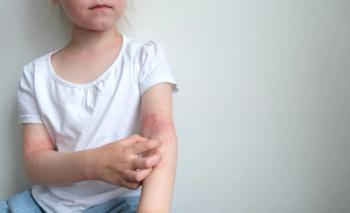
Study Links Semaglutide to Rare Skin Pain Condition
New research published in the American Journal of Health-System Pharmacy suggests a possible link between the GLP-1 drug semaglutide and allodynia, a painful skin sensitivity.
A new study published in the American Journal of Health-System Pharmacy suggests there may be a connection between a GLP-1 receptor agonist (GLP-1 RA) drug, semaglutide (sold under brand names Ozempic, Wegovy and Rybelsus) and an unusual side effect: painful skin sensitivity known as allodynia.
The research focused on four patients who developed this symptom after their semaglutide dose was increased.
In each case, the reaction was rated as “probable” using the Naranjo scale, a tool used by clinicians to assess whether a drug likely caused a specific side effect. The scale scores reactions as doubtful, possible, probable, or definite.
GLP-1 RAs such as semaglutide are commonly used to manage type 2 diabetes and support weight loss.
These drugs are generally well tolerated, though some patients experience nausea or vomiting.
In rare cases, more serious issues, including pancreatitis or thyroid tumors, have been reported.
Skin-related side effects such as rashes or injection site irritation have also been documented; however, allodynia has not been previously reported in connection with these medications.
According to the Cleveland Clinic, healthcare providers don’t exactly know how many people are affected by allodynia.
They did share that a study found it affects 6.9% to 10% of people around the world.
To investigate further, the research team reviewed existing literature using databases such as PubMed, clinical trial results, FDA documentation and standard drug references.
Researchers found no previous evidence linking semaglutide or similar GLP-1 medications to allodynia.
It was also revealed that the four patients in the study reported their symptoms on their own, without prompting or influence from media or online sources.
“There was a clear temporal and dose-response relationship in each of the four cases,” said Jennifer Stark, Pharm.D., BCPS, FCCP, alongside Marian J. Klass, Pharm.D., BCACP, and Lauren Owen, Pharm.D., all from the Veterans Health Care System of the Ozarks. “The four cases had scores ranging 5 to 6 (probable) on the Naranjo scale.”
They also pointed out that all patients were taking semaglutide for obesity, which requires higher doses than when used for diabetes.
This could explain why these reactions haven’t been widely seen in diabetes patients.
In one case, a patient continued using semaglutide, and their symptoms gradually went away after about four months.
The other three patients chose to stop the medication entirely.
The pain wasn’t limited to injection sites, nor did it appear to be linked to weight loss patterns or vitamin deficiencies—something the researchers checked through lab testing.
This study stands out because it's the first published report to describe this kind of reaction to semaglutide.
The fact that patients independently described their symptoms adds credibility to the findings.
However, the study has its limits, including the small sample size.
In addition, none of the patients resumed the medication after stopping it, resulting in researchers being unable to fully evaluate whether reducing the dose might help.
Since the study came out, the authors have heard from other providers reporting similar cases.
“We suspect this (allodynia) is more common than previously thought and it would be prudent for clinicians to ask about this unique (condition), particularly when escalating the dose,” said Stark and co-authors.
They also referenced a separate phase 2 clinical trial of retatrutide, another drug that targets similar hormone pathways.
That study found that 7% of participants experienced “skin sensitivity,” though it wasn’t clearly linked to how much weight they lost.
This raises the possibility that skin sensitivity could be a class-wide effect of GLP-1-based therapies, not just limited to semaglutide.
Looking ahead, the researchers say more studies are needed to explore whether slowing dose increases could reduce this risk, whether the pain goes away with continued treatment, and whether allodynia could point to other underlying health issues.
“It will be important for practitioners to report these findings with newer agents to FDA MedWatch,” said Stark and her colleagues.
Newsletter
Get the latest industry news, event updates, and more from Managed healthcare Executive.


















































